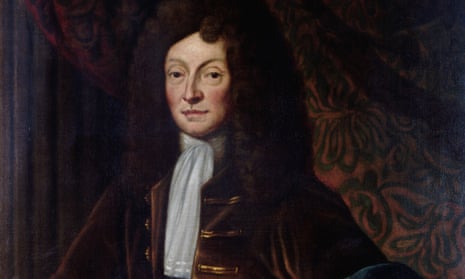If people have heard of Christopher Wren, they tend to know him as an architect. As the plaque in St Paul’s Cathedral says, “if you seek his monument – look around you”. It is unsurprising, then, that today’s Google Doodle celebrates him as the man behind that building and the city churches rebuilt after the great fire of London.
He was, however, also a very significant figure for the history of science. He was central to all the groups that, come the end of the commonwealth and the restoration of the monarchy in 1660, formed the Royal Society of London. At Oxford he became part of the group around John Wilkins, he was key to the correspondence network known as the Invisible College, and in London he became professor of astronomy at Gresham College in 1657.
At Oxford, Wren had engaged in many of the areas of research that marked the new, experimental science the Royal Society was to champion. He made astronomical observations, explored the phenomenon of magnetism and investigated the possibility of transfusing blood, or other substances, into living creatures. Two key elements of the new approach were emphasised: the use of instruments, such as telescopes, microscopes, clocks, rain gauges and barometers, and the aspiration of producing useful knowledge, whether to aid medicine, navigation, defence or (of course) architecture.
Wren, naturally, turned some of his investigations to the question of longitude, in search of a method of finding east-west position at sea. He explored both the use of the moon’s motion (the lunar-distance method) and magnetic variation. He spoke of both on his inaugural lecture at Gresham College, saying that the state of research in the latter was
a thing, I confess, as yet crude, yet what may prove of consequence in philosophy, and of so great use, possibly to the navigator, and thereby we may attain the knowledge of longitudes, than which, former industry hath hardly left any thing more glorious to be aimed at in art.
Wren also left a coded manuscript containing three potential longitude methods, delivered to the Royal Society in November 1714. This was just months after the passing of the first Longitude Act, which offered rewards of up to £20,000 for successful methods. The manuscript was rediscovered by David Brewster in the 1850s, and deciphered in 1860. They were rather brief allusions to a timekeeper kept in a vacuum, a device for steadying a telescope (probably to observe Jupiter’s satellites) and a screw that would measure the water a ship passed through, potentially assisting dead reckoning.
Wren was also involved in one eminently practical scheme for finding longitude, which was the establishment of the Royal Observatory in Greenwich. He was one of the commissioners who advised Charles II that an observatory ought to be established, in order to undertake the basic observations and mapping of the sky needed to underpin the lunar-distance method. He was subsequently asked to make recommendations about the building and staffing of the observatory.
It seems to have been Wren’s idea to have the observatory on Greenwich Hill, where there was a Royal park, a wrecked castle with strong foundations, handy river transport and an excellent view of the northern skies. It is uncertain how directly involved Wren was with designing the building now known as Flamsteed House, or whether most of it was left to his colleague in the Royal Society and surveyor of London, Robert Hooke or, indeed, the builders.
We do know that Wren felt sufficiently involved to later write about the choices made. It was built, he said, “for the Observator’s habitation and a little for pompe”. The pompe was largely revealed in the Great Star Chamber (now Octagon Room), with its high ceiling, long windows for telescopes and built-in clocks by Thomas Tompion.
It was hoped that Charles II would take an interest in “his” observatory, but he never actually visited, although he may have enjoyed the pomp supplied by the view of the observatory on its hill from Queen’s House below. Wren was very aware of the importance of royal patronage and of delivering the required impression. Back in 1663, when Charles II did deign to visit “his” Royal Society, Wren was clear that the right kind of show was required. They needed “a notable experiment” and, of course, “something of pomp”.
Architecture, with its technical challenges and delivery of useful and impressive spaces, was by no means a separate project for Wren. On his birthday it is worth remembering the sheer range of his interests and the impressive and lasting legacies of his skill in delivering “pomp”.
Rebekah Higgitt is author, with Richard Dunn, of Finding Longitude (Collins, 2014)

Comments (…)
Sign in or create your Guardian account to join the discussion